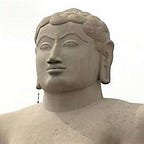KaTaPaYadi Sutra
It is a well-known fact that the usage of large numbers goes back a long time, in the Indian tradition. Nowhere else do you find proper names assigned to large powers of 10. Just to name a few, we have कोटि(10⁷), अब्ज (10⁸), खर्व (10⁹), निखर्व(10¹⁰), महापद्म (10¹¹), शन्कु (10¹²), जलधि (10¹³) and so on. We also notice that most languages in India, do not have their own names for numbers over a 1000, and use the same names used in Samskrta language. This indicates how the advanced state of mathematics and the textual traditions in Samskrta took all over the subcontinent quite early in history of India. The advantage of assigning names to numbers was that they could be easily incorporated in shlokas making them easy to remember and recollect as and when needed. Given that the oral traditions were very important in our civilization, as well as preservation of manuscripts was quite hard in the monsoon climates we find in India, the importance given to create texts or formulae that were easy to remember is easy to to understand.
While it is possible to remember a set of names for the powers of ten, it would be rather impossible to name every random number that may occur as a part of a calculation. Hence several schemes were employed to denote numbers using letters of the alphabet and the KaTaPaYadi sutra is one such.
Just to see the practicality and utility of such a scheme, let’s hypothesize the current population of Karnataka state is 7,41,12,507. Now, is it easy to remember this large number, or a phrase like देवकी परमानन्दं? I am sure you’d agree the word/phrase is easier to remember when you are required to remember many such seemingly random data. A scheme like KaTaPaYadi makes it possible to create such easy to remember word-equivalents for numbers.
The earliest attested use of KaTaPaYadi sutra goes to about 7th century CE. It was typically used in books relating to Jyotisha, in which mathematics forms a major part in the calculations of positions of various astronomical bodies. It is also used in other contexts, as we will see in this article.
Now let’s get to the Sutra. It can be stated in a very simple form as below:
कादिनव — टादिनव — पादिपञ्च — याद्यष्ट
Simply stated, the translation of the Sutra is thus:
Nine from Ka; Nine from Ta; Five from Pa; Eight from Ya.
The reference is to the Devanagari (or in general, the Indian) alphabet where the consonants are organized in this fashion:
क ख ग घ ङ
च छ ज झ ञ
ट ठ ड ढ ण
त थ द ध न
प फ ब भ म
य र ल व श ष स ह
The sutra assigns a numerical representation to each consonant. The 9 consonants starting from क get a value running from 1 to 9. Similarly, 9 consonants starting form ट get a value from 1 to 9. The 5 consonants starting form प get a number from 1 to 5. The 8 consonants from य get values running from 1 to 8. The consonants ञ and न do not have any assignment and are considered to represent zero. This can be summarized by the following table:
Notice there are multiple letters of the alphabet that correspond to individual numbers. For example, the number 8 can be represented by the consonants, ज, द or ह. The number 1 by क, ट, प, or य. Because of this flexibility, one can always come up with meaningful words to represent a number.
Now let’s take an example. Take the word , भारत. From the table above you can see भ=4, र=2, त=6. So, the word string equates to “426”. But there is an addendum to the sutra that states, अङ्कानां वामतो गतिः (i.e., numbers increase in their place value from right to left). So typically for KaTaPaYadi applications, we read the numbers in reverse, and so भारत = 624.
Another example: Take the word , जय. You can see ज=8, य=1. Hence जय=18.
Similarly, if the word was दय, that would be 18 as well, because द =8 and य=1! Now you can visualize the advantage of encoding the same number with different consonants to get meaningful words to incorporate into verses that are easy to remember!
I would like to quickly illustrate how this scheme is used in naming the mELas (basic musical scales) used in Karnataka Sangeeta. All mELas are given names where in the first two consonants of the mELa indicate the position within the 72-mELa scheme (thus running from 1 to 72). When the number is known, it is also possible to get the musical notes assigned to each of those, because of how the mELas are arranged in the table. For ex: the 34th mELa is named वागधीश्वरि (व=4, ग=3, hence वाग = 34); the 40th mELa is called नवनीत (न =0, व=4 , hence नव= 40); the 28th mELa is named हरिकाम्भोजि (ह = 8, र =2, hence हरि=28) and so on.
Here is an example application of kaTaPaYadi sutra, of a verse that lets you the value of Pi, up to 31 decimal places:
गोपीभाग्यमधुव्रात-शृङ्गिशोदधिसन्धिग ।
खलजीवितखाताव गलहालारसंधर ॥
This shloka is written to give the value of Pi as 3.1415926535897932384626433832792. Please note that the shloka itself does not mention that it is about Pi and does not encode the decimal point. Also, this specific shloka is not following the अङ्कानां वामतो गतिः format. However, given this contextual information, it is now easy for anyone to remember the value of Pi to 31 decimal places!
Decoding the sloka using the sutra, and why देवकी परमानन्दं =7,41,12,507 is left to you to try out! This will also help you to understand how to decode of conjunct-consonants (samyukta-aksharas), since the outcome is already known.
****************************************************************
